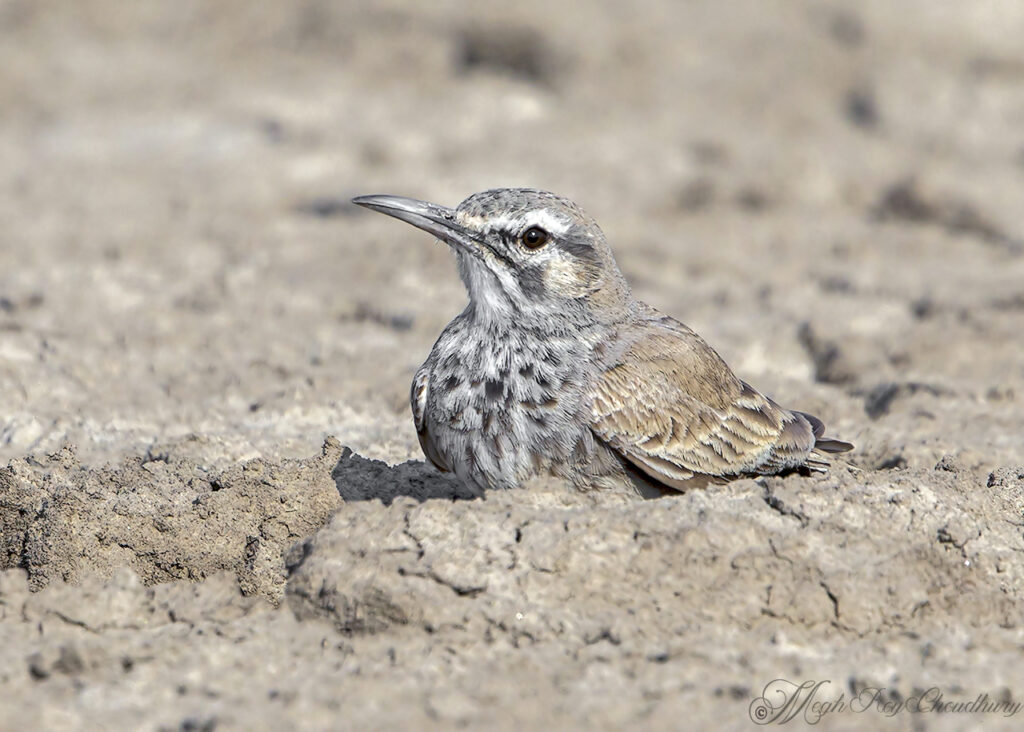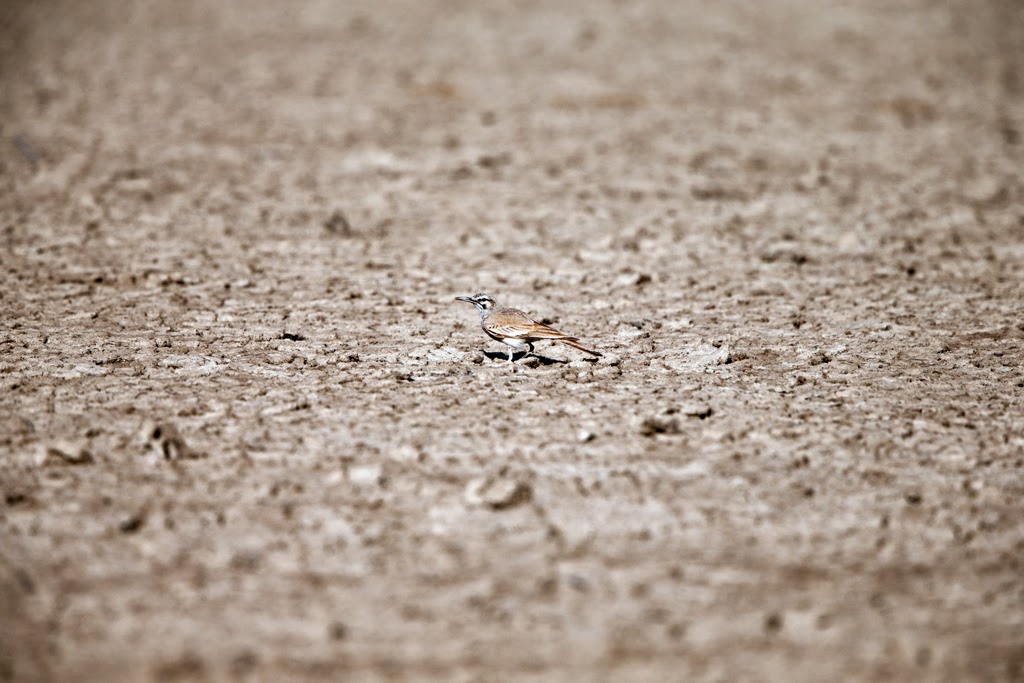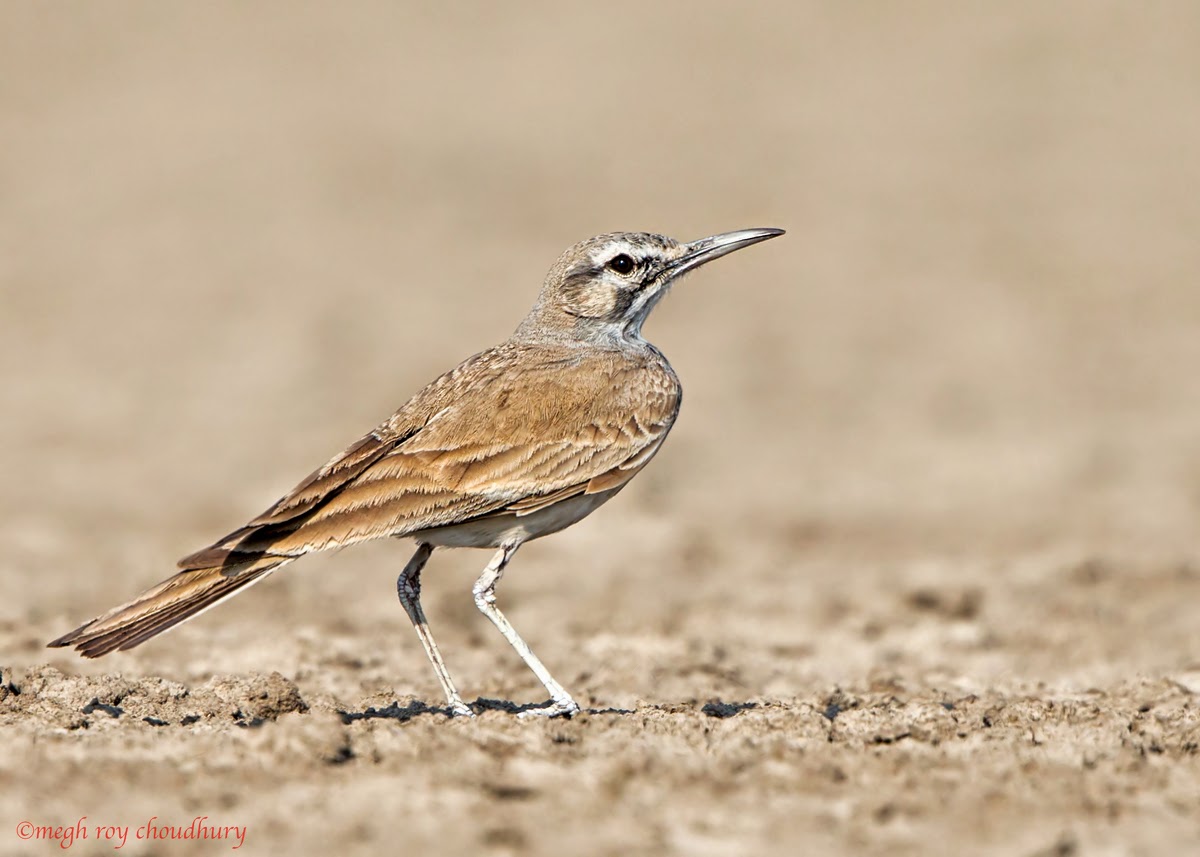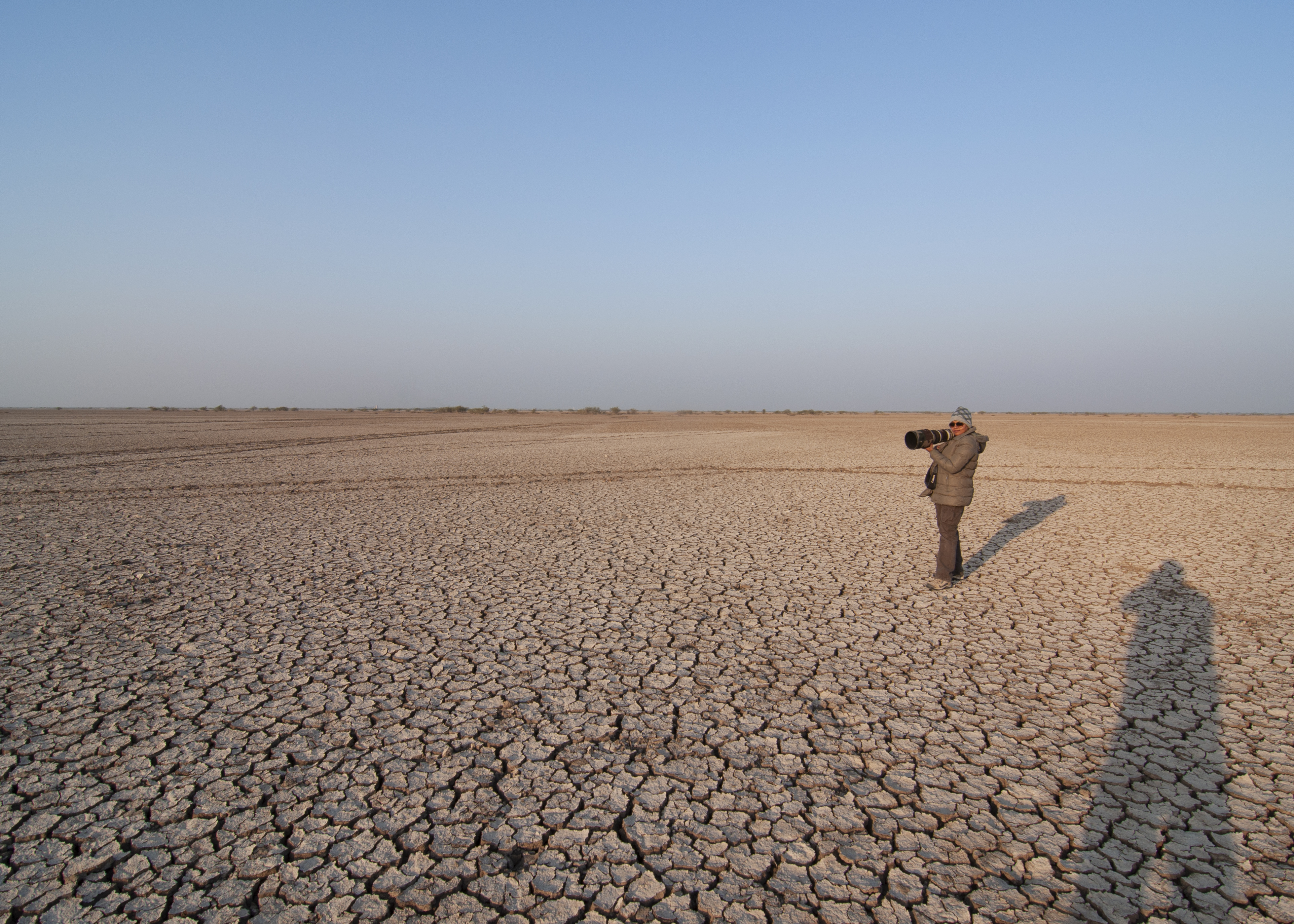White-naped tit. A pride of Kutch!!
Greater Hoopoe Lark(Alaemon alaudipes) is one of the most coveted species for any serious birder. It is the phantom of the desert and can prove to be a very tough customer to even sight. Leading birders have had to make multiple visits to bag this beauty. This bird is found in extreme desert environments, and is capable of surviving in temperatures of up to 50 degrees Celsius. The Greater Hoopoe Lark is well adapted for its preferred desert conditions, and does not need to drink water to survive. During periods of intense heat, this species takes shelter in the burrows in the desert floor, in order to remain cool and prevent water loss. The population of the Greater Hoopoe Lark is of four subspecies, each of which differs slightly in size and colour, and Alaemon alaudipes doriae is what is found in India.

I sincerely never thought I stood a chance of coming across this bird, when I ventured into my Little Rann of Kutch trip. When I enquired about this with the local guides all I got was a nod of the head and an understanding smile. They probably thought I was joking as it was my first ever trip there. I was told that I would be spending an entire safari if I wanted to see this species. Some even suggested that I better go for some other species.
However I finally made up my mind and we left at 6 30 AM. Temperatures were hovering around 3 to 4 degrees and cool gust of wind in the open safari jeep never helped the matters either. We travelled around an hour as gradually the landscape from urban area changed into a semiarid scrubland and finally into the Little Rann. Rann of Kutch is a huge salt marsh area alternating with a scrubland. It covers a gigantic area of around 10000 square kilometers. You can stand at any given point and just see an unending featureless landscape all around as far as the eyes can see. When my driver announced that we had finally arrived at our destination, I was shell shocked. In front of me was a flat dry terrain of land everywhere and not a remotest sign of life. All my hopes evaporated as I saw the mammoth task in front of me to sight and separate a small tiny being on this vast landmass. An old saying of trying to find a needle in the haystack sprung into my mind. However, this was not just a haystack and rather hay all over to the extent your eyes dared to roam around.
We slowly ventured around the desert hoping against hope that we might get lucky. As the hours dragged by, our position became more and more desolate. We even resorted to getting down from the jeep on the scorching desert floor and tried to get a ground level view. Finally I thought I saw a flicker of movement and for a moment I dismissed it as a trick desert was playing on my desperate senses. As I moved near, my heart started to flutter wildly. Then In a flash I knew finally I was about to attain my goal. As I set my sight on this avian wonder I was simply in a trance and wonder at the amazing way in which it blended in it’s habitat. The image below shows the level of camouflaging of the bird in it’s habitat.

Then suddenly the bird disappeared and even with my utmost efforts I couldn’t sight it. After a futile searching for around 15 min, I noticed a small speck in the vast landscape. and there it was, my elusive friend sitting very still in a small depression in the ground.
It sat there for almost an hour as I waited patiently for it to come out. Then in a flash it was out of it’s safe haven and started on a feeding frenzy. It ran continuously and relentlessly, as it digged out tiny morsels of the food available on the desert floor. It eats mostly invertebrates such as termites, grasshoppers and snails, although it will occasionally consume seeds or even small reptiles. To break the shells of snails, the Greater Hoopoe Lark can be seen dropping them onto a hard surface from the air, or hammering them against a rock. It is typically a solitary forager, but is sometimes seen in pairs or small groups.


I spent almost an hour with this beauty and returned back with a deep sense of bliss. I then decided that, at some future point, I would again walk on the coppery layer of The Rann and spend some endearing moment with my kind of Bird of Paradise.

©Megh Roy Choudhury. All rights reserved. No part of this blog may be reproduced, distributed, or transmitted in any form or by any means, including photocopying, recording, or other electronic or mechanical methods, without my prior written permission .
For permission requests, contact at: meghroychoudhury@gmail.com.